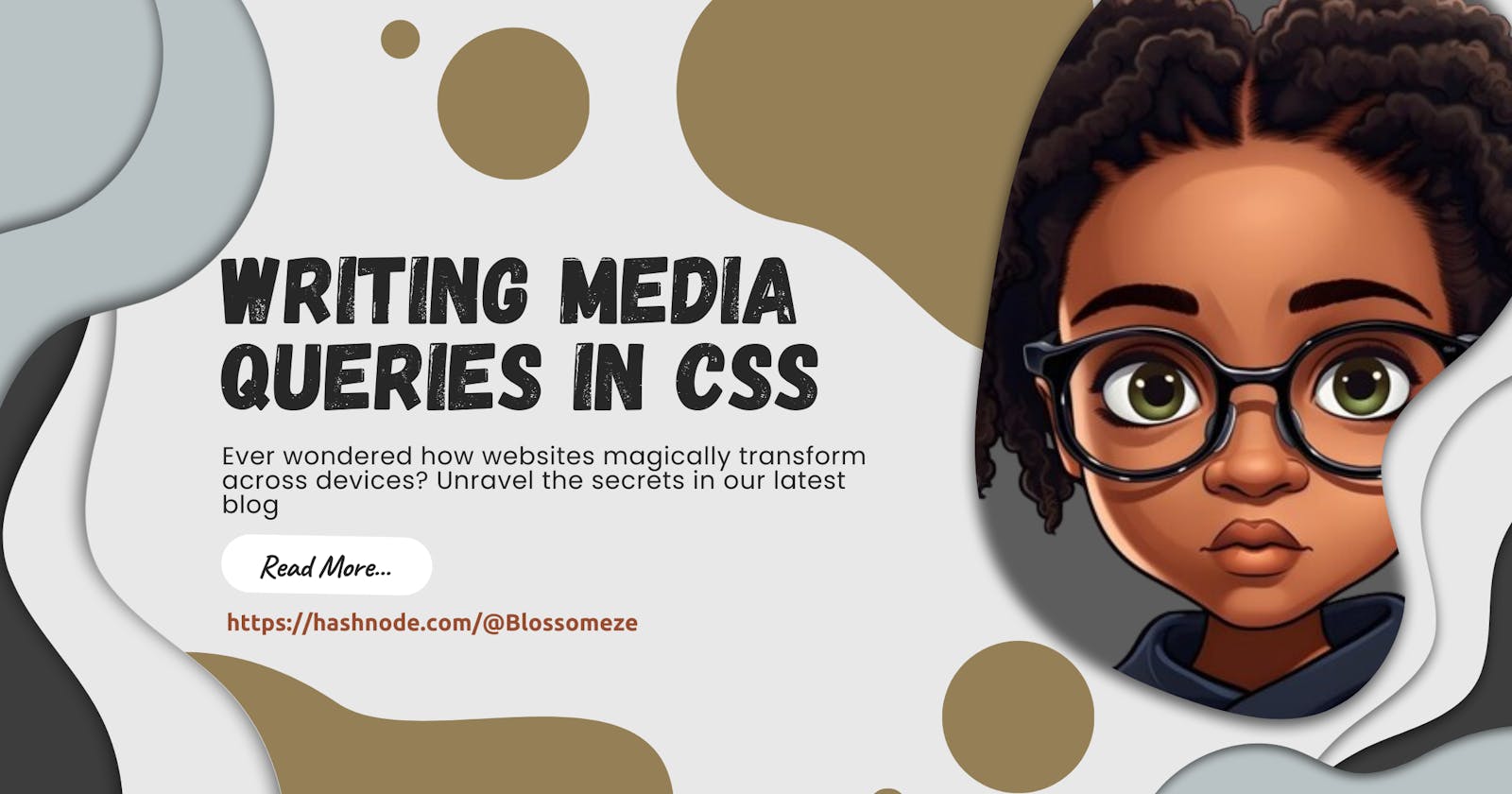Mastering Responsiveness: A Playful Guide to Writing CSS Media Queries -- PART 1
Introduction:
Welcome to an in-depth exploration of CSS media queries – the cornerstone of responsive design. In this guide, we'll navigate the intricacies of writing media queries with an emphasis on clarity and precision. Get ready to elevate your coding skills and empower your websites with seamless responsiveness!
Understanding the Power of Media Queries:
Decoding Breakpoints (The Rhythm of Responsive Design): Breakpoints are pivotal points where CSS rules change based on screen width. Consider them as markers in your code journey, where design adaptations take place. Selecting the right breakpoints is crucial in creating smooth user experiences. We'll delve into the methodology behind choosing breakpoints that align with your design goals.
Simplicity in Complexity (Streamlining Device Targeting): While countless devices exist in the ever-evolving digital landscape, targeting them all individually would be an arduous endeavor. Instead, we'll embrace an efficient approach that focuses on creating versatile designs. By selecting breakpoints based on design aesthetics and universal compatibility, we can streamline our efforts and cater to a wide array of devices.
Maximize Efficiency with Min or Max (The Minwidth vs. Maxwidth Dilemma):
Determining whether to use min-width, max-width, or both can be perplexing. To strike a balance, we adopt the mobile-first approach. Starting with the smallest screen width and progressively building on it using min-width media queries ensures a solid foundation for adaptive design. Let's demystify this dilemma and optimize responsiveness across devices.Unit Selection (The Measure of Device Independence):
When it comes to unit selection for media queries, we face multiple options, including pixels, REMs, and EMs. While pixels traditionally reigned supreme, the flexibility and accessibility of relative units like REMs and EMs make them favorable choices. These units adapt effortlessly to changes in context, creating harmonious and inclusive designs.
BREAKPOINTS FOR MEDIA QUERIES
/* Mobile Devices */
@media only screen and (max-width: 767px) {
/* CSS rules for small screens and mobile devices */
}
/* Tablets and Small Laptops */
@media only screen and (min-width: 768px) and (max-width: 991px) {
/* CSS rules for tablets and small laptops */
}
/* Medium-sized Laptops and Desktops */
@media only screen and (min-width: 992px) and (max-width: 1199px) {
/* CSS rules for medium-sized laptops and desktops */
}
/* Large Laptops and Desktops */
@media only screen and (min-width: 1200px) {
/* CSS rules for large laptops and desktops */
}
/* Landscape Viewports */
@media only screen and (orientation: landscape) {
/* CSS rules for landscape orientation */
}
/* Portrait Viewports */
@media only screen and (orientation: portrait) {
/* CSS rules for portrait orientation */
}
/* High-resolution Displays (Retina) */
@media only screen and (-webkit-min-device-pixel-ratio: 2),
only screen and (min--moz-device-pixel-ratio: 2),
only screen and (-o-min-device-pixel-ratio: 2/1),
only screen and (min-device-pixel-ratio: 2),
only screen and (min-resolution: 192dpi),
only screen and (min-resolution: 2dppx) {
/* CSS rules for high-resolution displays */
}
Conclusion:
Congratulations! Armed with the knowledge imparted in this comprehensive guide, you are now equipped to master the art of CSS media queries. These responsive design tools will empower you to create dynamic websites that seamlessly adapt to different devices. Embrace the principles of clarity, precision, and efficiency as you embark on your coding journey.
Remember, responsiveness is not just a technical requirement – it enhances user experiences and fosters engagement. By embracing this mindset, we can create digital experiences that leave a lasting impact. Happy coding!
